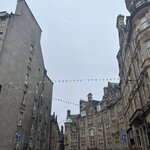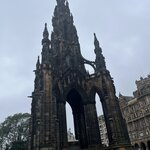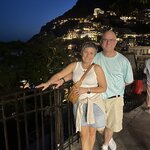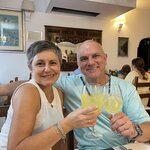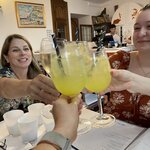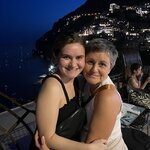Highlights
- Ride the cable car to the top of Mount Solaro on the island of Capri
- Hike the Sentiero degli Dei (Path of the Gods) trail along the Amalfi Coast
- Explore the ancient ruins of Sicily in Agrigento at the Valley of the Temples
- View Sicilian-Baroque architecture in Ragusa, Scicli, Noto, and Syracuse
- Climb to the top of Mount Etna, Europe's largest active volcano
Brief Itinerary
| Day | Highlights | Overnight |
|---|---|---|
| Day 1 | Arrive in Naples - Ferry to the island of Ischia | Isola d'Ischia |
| Day 2 | Enjoy a guided tour of Ischia | Isola d'Ischia |
| Day 3 | Discover Capri on a guided tour - Optional boat trip to the Blue Grotto | Capri |
| Day 4 | Transfer to Praiano via the cliffside village of Positano | Praiano |
| Day 5 | Admire the views along the Sentiero degli Dei hiking trail | Praiano |
| Day 6 | Transfer to Amalfi via the quiet village of Ravello | Amalfi |
| Day 7 | Roam the streets of Naples in search of art and street food | Naples |
| Day 8 | Arrive in Palermo - Enjoy a typical Sicilian dinner | Palermo |
| Day 9 | Discover Palermo with a guided city tour and lunch at Capo Market | Palermo |
| Day 10 | Visit the historic mountainside towns of Monreale and Erice | Palermo |
| Day 11 | Transfer to Piazza Armerina via the Valley of the Temples in Agrigento | Piazza Armerina |
| Day 12 | Visit the ruins of a 4th-century estate on your way to Ragusa | Ragusa |
| Day 13 | Explore the UNESCO-listed Baroque towns of Modica and Scicli | Ragusa |
| Day 14 | Discover the architecture and ancient ruins of Noto and Syracuse | Syracuse |
| Day 15 | Transfer to Catania - Explore the city | Catania |
| Day 16 | Day trip from Catania to Taormina - Guided hike of Mount Etna | Taormina |
| Day 17 | Explore Taormina - Relax on the beach | Catania |
| Day 18 | Depart Catania |
Detailed Itinerary
Day 1: Arrive in Naples - Ferry to the island of Ischia

Welcome to Italy! Upon arriving at the airport in Naples, your private transfer will take you to the port to catch a ferry to the island of Ischia in the Gulf of Naples.
Ischia is very important in the area, as it's been inhabited for thousands of years as a strategic point for Phoenicians, Greeks, Romans, Spanish, French, and many other civilizations. Its name is thought to originate from the Greek word for "vase", which explains the island's long tradition of pottery.
After an aperitif with your hosts—featuring chilled spumante from Ischia—you'll enjoy dinner at one of the local restaurants on the island. You can't miss tasting some of Ischia's fresh seafood.
Day 2: Enjoy a guided tour of Ischia
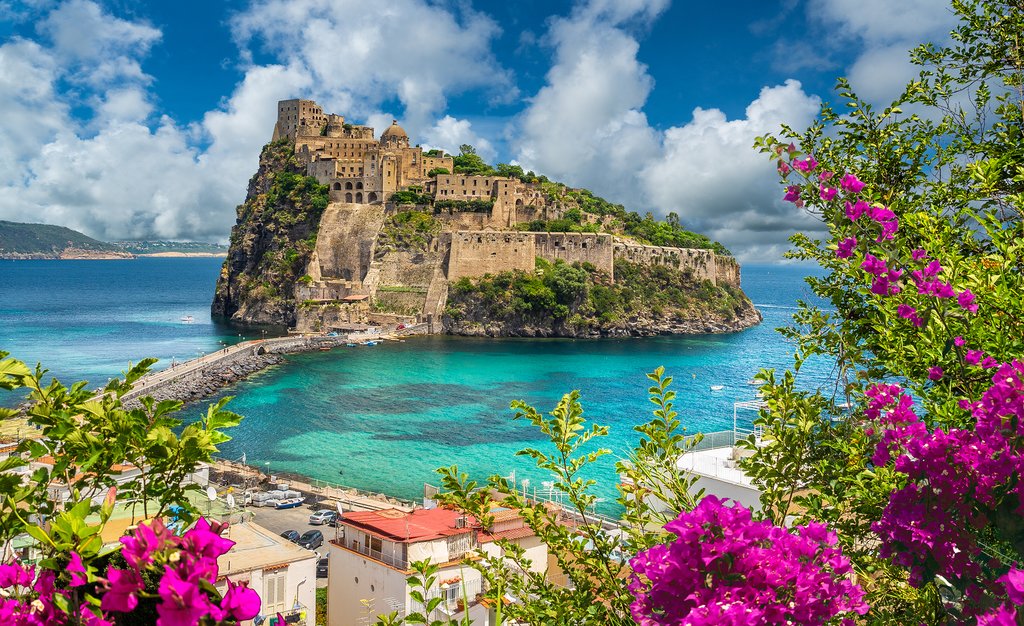
Today you'll enjoy a guided tour of Ischia. Your guides will start by covering its complicated history. Since the island has been conquered by several different civilizations in the Mediterranean, these various cultural influences are still noticeable today. You'll see this with the island's architecture, cuisine, art, and the customs of its people. Most emblematic of this long history is Castello Aragonese, an imposing fortress made out of volcanic stone and encircling the entire village. Its first structure dates back to 474 BCE, but its actual shape was the result of a large renovation done by Alfonso V of Aragon in 1441.
You'll also stroll along the most popular streets of the island, visiting the shops of Corso Vittoria Colonna at Ischia Porto, the relaxing Sant'Angelo village, and the elegant boutiques surrounding Piazza Santa Restituta at Lacco Ameno. Of course, in keeping with the local culture, you'll enjoy an al-fresco lunch at one of the island's terraced cafes.
The evening is yours to enjoy the island at your leisure and relax by the public beaches.
Day 3: Discover Capri on a guided tour - Optional boat trip to the Blue Grotto

After breakfast, you'll head to the island of Capri, an exclusive destination within the Bay of Naples and a famous hideaway of poets and artists. The island always delights with its beauty and natural elegance. With your local guide, you’ll visit the Gardens of Augustus as well as Villa Jovis, the ruins of Roman Emperor Tiberius' lavish island home.
Afterward, you'll ride the chair-lift to the summit of Mount Solaro for some of the island's most famous views. You can also opt for a boat trip to the famous Blue Grotto.
If you want to enjoy some hiking, Capri is home to the scenic Sentiero dei Fortini hiking trail, which connects the Blue Grotto to the Lighthouse of Punta Carena. Here you enjoy a drink while watching the sunset, followed by a casual dinner at one of the snack bars nearby.
If you want something a little more formal, there are plenty of restaurants in the picturesque village of Anacapri on the slopes of Monte Solaro.
Day 4: Transfer to Praiano via the cliffside village of Positano

Today's destination is the romantic town of Positano, which sits on the Amalfi Coast looking like a seashell inset in the greenery of the Lattari Mountains. In the morning, you'll arrive in the cliffside village by boat, which is an excellent way to absorb the views of colorful houses along the coast.
Positano is small, making it easy to visit on your own. Start in the town square, where you can do some shopping and enjoy views of the sea. The town is famous for its leather sandals, or try some of its products made with local lemons, such as a cold granita, a refreshing gelato, or an iconic limoncello.
If you're interested in hiking, the trail to Montepertuso, "the mountain with a hole" is a short and scenic route that looms over the village.
After exploring Positano, you'll head to the small village of Praiano, where you'll stay the night. Your accommodation overlooks the cliffs, with charming rooms decorated in blue and whites tiles.
Day 5: Admire the views along the Sentiero degli Dei hiking trail
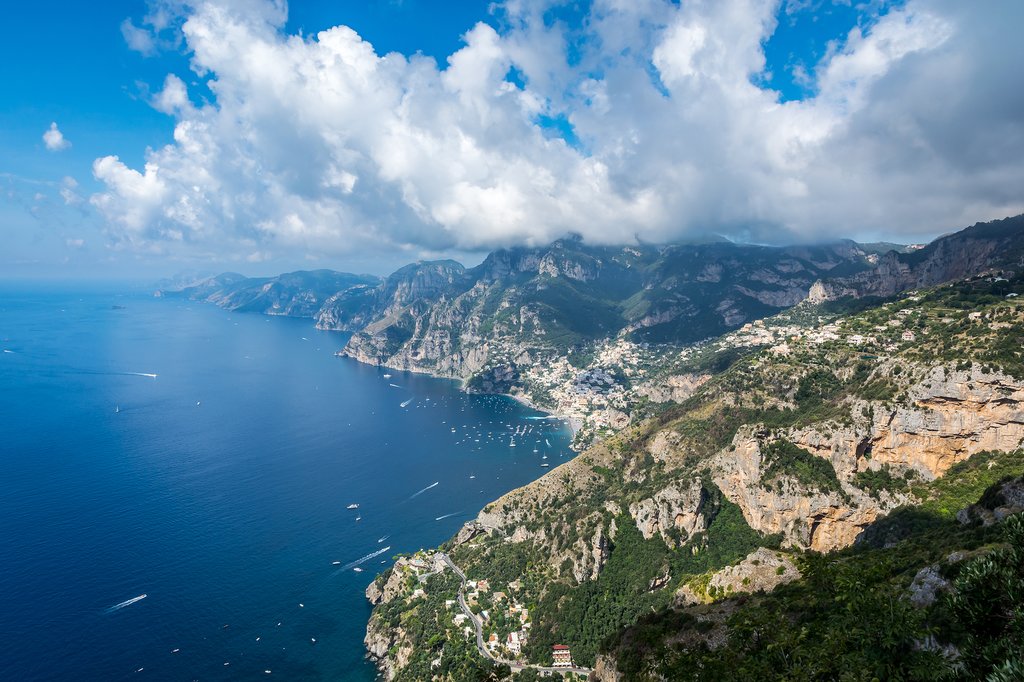
Start your morning with a hearty breakfast, followed by a shuttle up to the village of Bomerano. The town is known for its savory snack fior di latte, an ultra-fresh mozzarella served with crunchy bread. This will help you prepare for your hike along the Sentiero degli Dei trail, also known as the Path of the Gods.
Your trek will take you to Nocelle, a small, ancient village overlooking Positano. The views here are some of the best in the region, as the trail acts like a natural balcony suspended over the Amalfi coastline.
Along the trail, you'll stop to have lunch with a local goat shepherd who has maintained his traditional craft. He's proud to let his guests taste homemade products, including fresh goat cheese and local red wine.
After your hike, you'll return to Praiano where the rest of the day is yours to spend at your leisure. You can relax at the public beach or explore the churches in the town.
Day 6: Transfer to Amalfi via the quiet village of Ravello

In the morning, you'll leave Praiano for the town of Amalfi, detouring to the peaceful village of Ravello along the way.
Amalfi was once one of the four maritime powers ruling the Mediterranean. The most important building of its Golden Age is its Norman-Arab cathedral. Officially known as the Cathedral of Saint Andrew the Apostle, it contains the tomb of St. Andrew and dominates the town's busy Piazza Duomo.
Ravello is surprisingly quiet compared to Amalfi. That's thanks in part to the tortuous road from the coast, which keeps the big tour buses away from this peaceful village. Your trek to Ravello is rewarded with incredible views of the Amalfi Coast and the Tyrrhenian Sea. You can wander its flower-lined, cobblestone lanes and visit the gardens of Villa Rufolo and Villa Cimbrone, where you’ll find quintessential Mediterranean serenity.
In the late afternoon, you'll make your way to Amalfi and settle into your accommodation for the evening. Head up its main street to enjoy a sunset dinner at one of the restaurants overlooking the water.
Chat with a local specialist who can help organize your trip.
Day 7: Roam the streets of Naples in search of art and street food

Despite being overshadowed by the likes of Rome and Florence, Naples still holds its own as a city with a bustling arts scene. Today you'll discover the art and architecture that flows through the city.
To start, as you walk through Naples, take note of its walls. Once ridiculed for the graffiti that covered its walls, street art has exploded in Naples and even includes murals from world-famous contemporary artists such as Banksy. Wander through its neighborhoods and admire the artistic expressions of local and international artists.
Next, visit the MADRE contemporary art gallery, with installations from artists such as Jeff Koons, all displayed in a 19th-century baroque building. Then take a trip back in time, immersing yourself in the gardens of the Capodimonte Museum, which was once the hunting preserve of the Bourbons. End your arts exploration with the museum's most famous masterpiece, Caravaggio's astounding Flagellation of Christ.
When you need a break for sustenance, stroll the colorful streets of the city center where you'll find street food available on every corner. Favorite Napoli specialties include a cuoppo, a brown paper cone filled with fried seafood and vegetables, as well as pizza, fried zucchini flowers, fried mozzarella, and arancini, a fried rice ball stuffed with ragu.
The rest of the day is yours to enjoy at your leisure. Head down to the port to visit the 13th-century Castel Nuovo, the Royal Palace of Naples, and the always busy, Piazza del Plebiscito. For dinner, head to Piazza Dante and grab typical Neapolitan-style pizza along the famous street, Via dei Tribunali.
Day 8: Arrive in Palermo - Enjoy a typical Sicilian dinner

Welcome to Palermo, the regional capital of Sicily. The city is known for its typical Mediterranean weather and colorful history with strong ties to the Roman, Byzantine, Arab, and Norman eras, as evidenced in its architecture, culture, music, and cuisine. Upon arriving at the airport, you'll transfer to your hotel in the heart of Palermo. After settling in, head out to explore the city.
Easy to navigate by foot, Palermo's historic center is filled with medieval streets, monuments, museums, and restaurants, all within walking distance. To introduce you to the city, your hosts will lead you on a stroll along Via Maqueda, a popular pedestrian street that connects the northern and southern areas of the city. Then you'll enjoy an aperitif with your hosts, followed by a typical Sicilian dinner in one of Palermo's best restaurants.
Day 9: Discover Palermo with a guided city tour and lunch at Capo Market

Enjoy breakfast at your accommodation, then join your hots for a private tour of the Sicilian capital. Starting from your hotel, you'll visit the Quattro Canti Square, enjoying views of Palazzo Reale and its 12th-century Duomo. Next, you'll explore one of the landmarks of Palermo, the beautiful 12th-century Cappella Palatina—known for its Byzantine mosaics—inside the Palazzo dei Normanni. Within the 9th-century palace, you can view a historic chapel and royal apartments.
Take a break from Palermo's architecture and head toward the lively Capo Market, a great spot to enjoy lunch or a typical Sicilian snack, such as panelle (chickpea fritters) and cazzilli (pan-fried potato croquettes).
Along the tour and at lunch, you'll learn about the history of Sicily and the uniqueness of Sicilian society. This will support your wanderings after the tour when you can continue to meander the city at your leisure.
Day 10: Visit the historic mountainside towns of Monreale and Erice

After breakfast, you'll transfer to the town of Monreale, which sits on the slopes of Monte Caputo. Here you'll discover one of the greatest examples of Norman architecture in the world, the Cattedrale di Monreale. This 12th-century UNESCO World Heritage Site features ornate cloisters and gold mosaics depicting scenes from the Old and New Testaments. Admire the Norman-Byzantine art and architecture as you meander through the cathedral.
Next, you'll enjoy a scenic drive over the limestone mountain, Monte Caputo, until you reach the coast and the medieval town of Erice. Perched on a cliff and offering views of the sea, Erice is known for its winding streets, stone archways, and decorated courtyards. Enter the town via Porta Trapani, then walk to the historic center and visit the 14th-century Duomo. Follow the ancient city walls to the Castello di Venere, a 12th-century Norman defensive fortress which houses ruins of a Roman spa and the Temple of Venus.
After lunch, you'll head back to Palermo where you can enjoy the evening on your own.
Day 11: Transfer to Piazza Armerina via the Valley of the Temples in Agrigento

Today you'll trade the bustle of Palermo for the quiet of Sicily's rural countryside. Along the way, you'll visit another UNESCO World Heritage Site and one of Sicily's most impressive archeological sites, the Valley of the Temples in Agrigento. It's home to one of the world's best examples of ancient Greek art and architecture.
The highlight of the valley is the Temple of Concord, which was built between 440-430 BCE and was still in use for over a millennium later. It's an impressive sight, in nearly perfect condition and, when considering preserved Doric architecture, is often compared to the Parthenon in Athens. The Temple of Juno and the Temple of Heracles are also quite interesting, as well as the Olympeion Complex with the Temple of the Olympian Zeus.
After a full day exploring Agrigento, you'll head inland towards Piazza Armerina, a small town in the heart of rural and agricultural Sicily. After settling into your accommodation, roam the village's ancient, twisting streets, finding restaurants and bistros in hidden corners and admiring the facades of the many churches and cathedrals.
Day 12: Visit the ruins of a 4th-century estate on your way to Ragusa

After a leisurely morning enjoying the gardens and orchards of Piazza Armerina, you'll head toward Ragusa, passing through the typical landscape of Sicily's interior with bare hills, fields, and dry stone walls. Just outside of Piazza Armerina are the ruins of Villa Romana del Casale, a 4th-century estate that is filled with ancient Roman mosaics and paintings. You'll find that these ruins fit in perfectly with the rugged terrain.
Next, you'll stop in the historic town of Caltagirone, admiring the wonderful staircase of Santa Maria del Monte. Here you can enjoy lunch and visit one of many local pottery workshops, creating colorful crafts according to ancient traditions.
The final destination of the day is the village of Ragusa Ibla, where you'll spend the night and enjoy some free time to explore the streets. Ragusa Ibla is known for its historical center, which is filled with typical Sicilian Baroque architecture. You can't miss the two dominating churches, the Church of Saint George and the 18th-century Ragusa Cathedral.
As the sun starts to set, head to the eastern side of the island and stroll through the Giardino Ibleo gardens. You'll enjoy pathways, churches, fountains, and gorgeous views of the old historic center. End your day by tasting some of the local products at different bars and cafes throughout the old town, including olives, pistachios, different cheeses, and wine.
Day 13: Explore the UNESCO-listed Baroque towns of Modica and Scicli

Enjoy a slow morning, starting with breakfast at your hotel and another stroll through the streets of Ragusa. Walk to some of the viewpoints throughout the town, or check out the Museo Archeologico Ibleo di Ragusa if you'd like to learn more about the archeology of the region. In the late morning, you'll explore the area around Ragusa, stopping in Modica and Scicli.
Both villages are UNESCO-listed Baroque towns, with exceptional architecture spread throughout their ancient streets. In Modica, visit the Cathedral of St. George and the Casa Natale Salvatore Quasimodo, the birthplace of the famous poet. You can't miss the Chocolate Museum, which has been producing recipes since the 16th century, using Aztecan concoctions that were imported by the Spanish. Enjoy lunch in Modina, saving some chocolate tastings for dessert.
Scicli makes for a great reprieve, as it's far less touristy than the other baroque towns in the region. You can expect beautiful and quiet streets, plus views out to the Sicilian coastline. Visit the Palazzo Beneventano, plus the Catholic churches of Chiesa di Santa Teresa and the Church of Saint Ignatius of Loyola. You can also explore the archeological site of Chiafura, where you'll enjoy incredible views of the town.
In the evening, you'll return to Ragusa.
Day 14: Discover the architecture and ancient ruins of Noto and Syracuse

While making your way to the historic city of Syracuse, you'll discover two of Sicily's most architecturally-rich towns. You'll start in Noto, a UNESCO World Heritage Site and the capital of Sicilian-Baroque architecture. Along its main street, you can admire palaces, convents, and churches that characterize the historic center. Stop at the 18th-century Noto Cathedral and the impressive palaces of Nicolaci and Ducezio.
After a hosted lunch in Noto, you'll head to Syracuse, starting with a visit to the Archaeological Park of Neapolis. Here you'll find the ruins of a Greek Theater, a Roman Amphitheater, and the old stone quarry and cave network of Latomie, where the famous limestone cave Orecchio di Dionisio (The Ear of Dionysius—aptly named by Michelangelo) is found.
Next, you'll explore the historic center of Syracuse, which is on the island of Ortygia. Stroll by the Piazza Duomo with its 7th-century Cathedral of Syracuse, which houses the ancient Temple of Athena. Today, the cathedral maintains a baroque facade, but in the past, it was a Greek temple built in traditional Doric style. Meander the narrow alleys of the historic center and make your way to the Fountain of Arethusa, which is mentioned in many works of literature, including Moby-Dick.
In the evening, enjoy an aperitif along the ancient walls as the sun sets into the sea, followed by a traditional Sicilian dinner.
Day 15: Transfer to Catania - Explore the city

Your relaxed morning includes a leisurely breakfast and a final stroll through beautiful Syracuse. In the afternoon, you'll catch a shuttle to the ancient port city of Catania where you'll have the rest of the day to explore on your own.
If you'd like to visit the energetic Pescheria (fish market), you can opt to leave Syracuse a bit earlier. A visit to Catania's Fish Market is much like attending a performance, with the clamor of voices, bustle of vendors, and the unique character of the fishmongers themselves.
In the afternoon, explore the city's main attractions, including the Roman Theatre of Catania, an open-air amphitheater from 300 BCE. Visit the city's main square, Piazza Duomo, and its neighboring Cathedral of Saint Agatha. You can't miss the city gates, Porta Ferdinandea, and Porta Uzeda, nor the 18th-century Church of Saint Benedict.
In the evening, enjoy dinner at one of the many seafood restaurants near the fish market.
Day 16: Day trip from Catania to Taormina - Guided hike of Mount Etna

Today you'll have an early start, heading inland toward Europe's largest active volcano, Mount Etna. We'll start in the Rifugio Sapienza, the southern access point to the volcano for a guided hiking tour taking you up 9,500 feet (2,900 m) to Torre del Filosofo. Enjoy views of solidified lava flows, fumaroles, and the Mediterranean Sea.
In the afternoon you'll continue to the village of Taormina, a sophisticated resort town located on the Ionian Sea. The town's incredible vistas and ancient Greco-Roman theater, often used for operatic and theatrical performances, make it the perfect destination for fans of the arts. You'll visit the 10th-century Palazzo Corvaja, named after one of the city's most influential families, the restored 17th-century Catholic Santa Caterina Church, and Vicolo Stretto, the narrowest street in Taormina.
Taormina is a great spot to have your last Sicilian aperitif, and nothing will suit better than a glass of local Etna Bianco wine. Afterward, you'll enjoy a hosted dinner featuring the traditional tastes of the region.
Day 17: Explore Taormina - Relax on the beach

You'll wake up to the scenery of Taormina, perched atop rocky cliffs overlooking the sea. you can imagine, while your eyes embrace the town perched on the rocks overlooking the Ionian Sea. After breakfast, you can enjoy exploring the city at your leisure, as your final day in beautiful Italy.
Start with a stroll through the historic town, visiting the preserved ruins of an ancient Greco-Roman theater. Because the preservation is so thorough, today the theater is used for events while displaying views out to Mount Etna, the valley, and the Sicilian coastline.
Next enjoy the town's main square, walking along the narrow, medieval streets. You can't miss Belvedere di Via Pirandello (a viewpoint overlooking the sea) or the 15th-century Palazzo Ciampoli. You'll have some free time to enjoy the shops selling local handcraft, such as coral jewelry, precious laces, ceramics, sweets, and more.
In the afternoon, head down to the coast to explore the Grotta Azzurra cave or relax along the public beach, Spiaggia Isola Bella. You can easily swim—or during low tide, even walk—out to the island Isola Bella. Before dinner, walk out to Capo Taormina to enjoy one final sunset.
Day 18: Depart Catania

After breakfast, you'll transfer to the Catania Fontanarossa Airport for your flight home, or onto your next destination.

